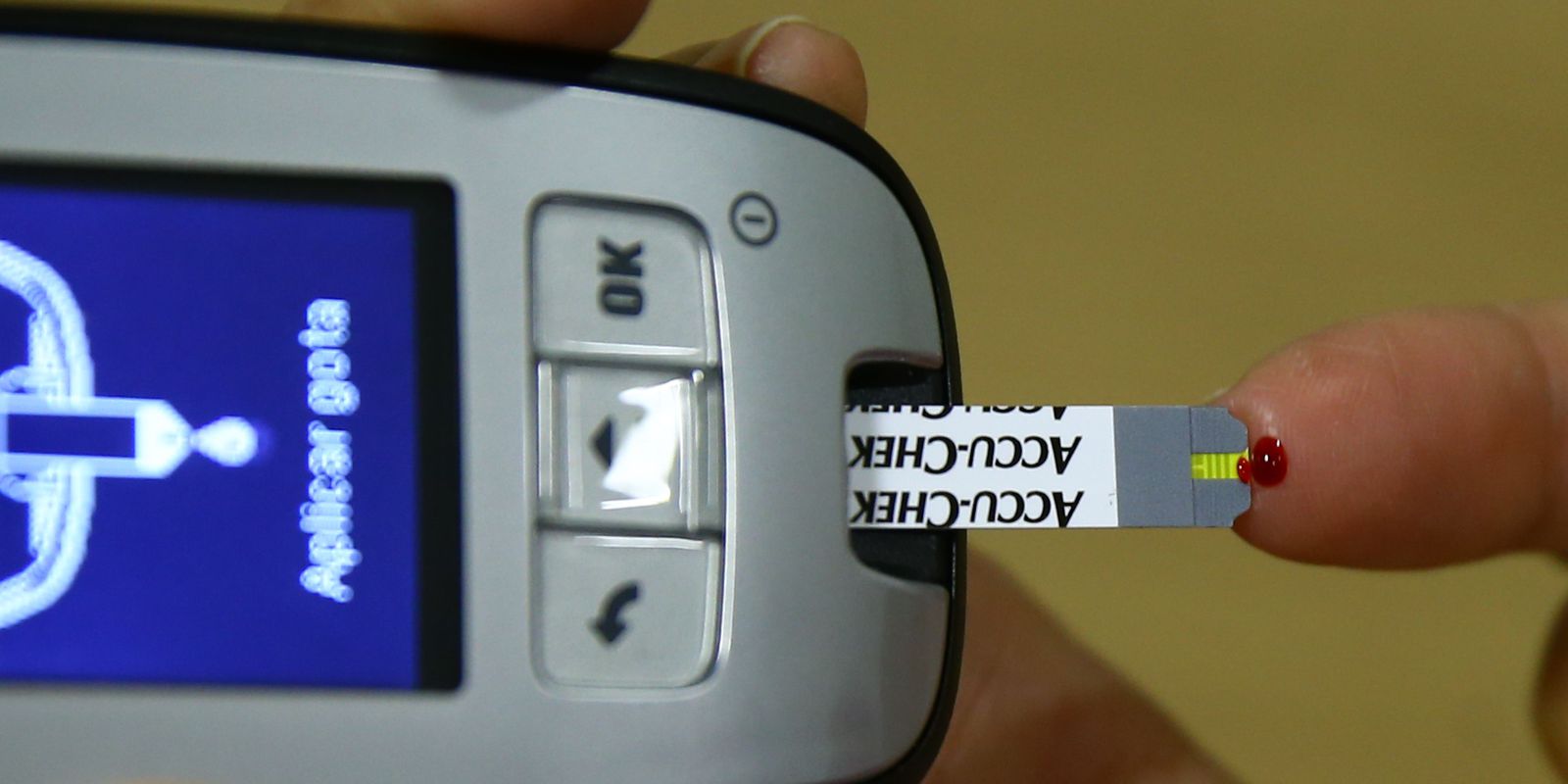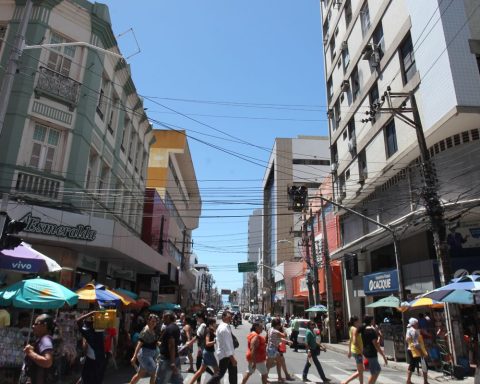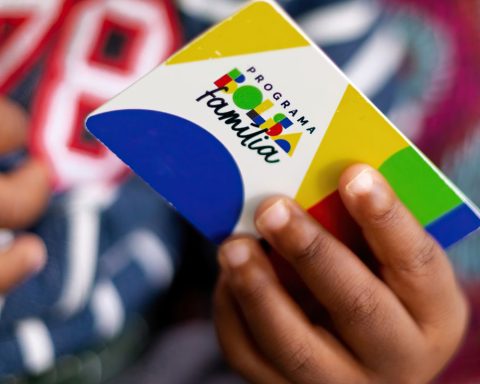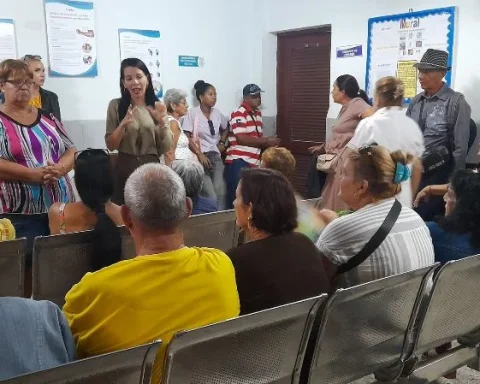In the period from 2012 to 2021, 245,811 Brazilians underwent lower limb amputation involving legs or feet, an average of 66 patients per day, which means at least three procedures performed per hour.
The unprecedented survey was carried out by the Brazilian Society of Angiology and Vascular Surgery (SBACV), based on data from the Ministry of Health. In an interview with Brazil Agencythe company’s president, Julio Cesar Peclat de Oliveira, said that “the problem is that, when we compare it to the last few years, we see that the situation is getting worse and, coincidentally, with the covid-19 pandemic.”
By analyzing the numbers, the doctor interpreted that many patients lost continuity of treatment for chronic diseases such as, for example, diabetes, which is one of the main causes of lower limb amputation.
“It is a chronic disease and the treatment has to be chronic, that is, it cannot be discontinued”. He explained that, when a person is diabetic and does not undergo adequate treatment and uses medication, “they decompensate for the disease and become more vulnerable to the risks of, for example, having a wound on the foot that will infect and gangrene, progressing to loss of that limb. ”.
Peclat de Oliveira stated that about 70% of amputations are motivated by a small wound or callus on the foot. Therefore, he recommended that diabetic patients need to have strict discipline and do daily self-examination, especially of the so-called neuropathic foot, characterized by the progressive loss of sensitivity.
“In general, the message is that they should do the self-examination of the feet, especially the diabetic patient”. The doctor recalled that many patients do not know they are diabetic. Many will only find out about this when they go to the office to treat varicose veins, schedule surgery and the doctor finds that their blood glucose levels are high.
“In the world, one in five people does not know they have this disease. The pandemic has revealed this to us. Many patients who come to the office or emergency services with diabetes complications only find out that they have it after treatment”, he highlighted.
Diabetes is a disease closely linked to a sedentary lifestyle and obesity and is progressively increasing worldwide, according to the doctor. During the pandemic, which began in 2020, people had less access to health facilities and chronic diseases “were mistreated because of it”. According to him, smoking is another major cause of limb amputations due to clogged arteries.
Alert
For specialists from the Brazilian Society of Angiology and Vascular Surgery, the increase in the number of amputations during the pandemic period is an alert to the consequences of the suspension of clinical treatments. “The levels are really alarming,” analyzed the angiologist and vascular surgeon. Other risk factors include high blood pressure, dyslipidemia, advanced age, chronic renal failure, hypercoagulable states, and family history.
According to the research, in 2020, when the epidemiological crisis took hold in Brazil, the daily average of amputations reached 75.64. In 2021, the number evolved to 79.19/day. Between 2020 and 2021, around 56,513 Brazilians underwent the process of amputation or disarticulation of lower limbs, which means a monthly average of 2,354 procedures, in the midst of a health crisis. Per day, this value corresponds to an average of 77.4 surgeries.
Between 2012 and 2021, the number of amputations rose by 56%. Last year, the highest number of procedures was recorded (28,906), against 18,908 at the beginning of the series. By SBACV calculations, 2022 should show an increase in total amputations. The survey points out that at least 82.44 people were amputated daily between January and March this year, with a monthly average of 2,473 procedures.
By regions, the survey found that between 2012 and 2021, the Southeast region accounted for 42% of all amputations performed in Brazil, totaling 103,509 amputees. Then come the Northeast, with 80,124; the South, with 35,222; the Midwest (13,514); and the North (13,442). “The large centers have a greater demand for patients and, perhaps, better-prepared health units”, estimated the president of SBACV. He also highlighted that in addition to diabetes and smoking, another significant cause of lower limb amputations in Brazil are traffic accidents, mainly involving motorcyclists.
By federation units, the research reveals that Alagoas was the state with the highest increase in the number of amputations (173%,) in the comparison between the beginning and the end of the historical series, from 182 to 497 procedures. Roraima (160%), Ceará (146%) and Rondônia (116%) also had significant growth. On the other hand, Amapá and Amazonas were the only states in the country where there was a drop in the period, with reductions of 29% and 25%, respectively.
In absolute numbers, the states that most performed lower limb amputation procedures in the public health system were São Paulo (51,101), Minas Gerais (26,328), Rio de Janeiro (21,265), Bahia (21,069), Pernambuco (16,314) and Rio Grande do Sul (14,469). The states with the lowest number of records were Amapá (315), Roraima (352), Acre (598), Tocantins (1,154) and Rondônia (1,383). The president of the SBACV pointed out that the possibility of the patient suffering a lower limb amputation is independent of his socioeconomic situation. “If you don’t pay attention to your feet, you could be an amputee.” He said that amputations are more at the level of the feet and toes, and can also cut the entire antifoot, the leg below the knee and the leg at the level of the thigh.
“And whenever you have an amputation, it’s in the failure of medical or surgical treatment.” In the case of an inveterate smoker, with blockage of the femoral vein, for example, if he goes to the office early with complaints of pain when walking, the doctor manages to vascularize the leg, takes blood to the foot and solves the patient’s situation. “The problem is when this patient does not reach this stage and goes to the public hospital with gangrene in the foot. Then there is nothing more to do. He saves his life by amputating his foot or leg.” Peclat de Oliveira maintained that everything in medicine is prevention. “If you, at the slightest sign, make your evaluation with a specialist, it could simply be decompensated diabetes from neuropathy.”
prostheses
Peclat commented that patients undergoing amputations, including those in the Unified Health System (SUS), manage to survive very similarly to normal patients, with quality of life. The problem is that most amputees are elderly and smokers, that is, they do not have a good cardiopulmonary reserve and cannot wear prostheses, that is, adapt to the use of prostheses. “These patients are bedridden or in a wheelchair for the rest of their lives. Then, yes, he has a lower survival rate and a possibility of poor quality of life. The reality of these patients is very sad”. He added that the biggest difference between the young amputee and the chronic amputee is that the latter does not usually adapt quickly to a prosthesis.
In addition to representing a serious public health problem, the constant growth in the number of amputations in Brazil has negative impacts on public coffers, consuming part of the health funds allocated to the states. In 2021 alone, BRL 62,271,535.96 was spent on procedures performed across the country. Between January 2012 and March 2022, considering the inflation of each year, expenses totaled BRL 660,021,572.69, with a national average of BRL 2,685.08 per procedure.
recommendations
The SBACV’s vascular surgeon, Eliud Duarte Junior, national coordinator of the Diabetic Foot Guideline of the Brazilian Medical Association (AMB), stated that some measures can reduce the risk of complications in the feet of diabetic people. Eating a balanced diet, practicing physical activity, maintaining blood glucose control contribute to the improvement of the vascular system as a whole. Duarte Junior recommended some simple measures that can help prevent diabetic foot, when incorporated into the routine.
Among the measures are:
– do not use cold, warm, hot or cold compresses or scald feet because, due to the lack of sensitivity caused by neuropathy, the person may not notice lesions in the feet;
– wear socks without seams or with the seams out, to avoid rubbing the rough part of the fabric with the skin;
– do not remove cuticles from toenails, because any bruise, however small, can be a gateway to infections;
– do not wear sandals with straps between the toes;
– cut the nails straight and hit the corners with a nail file, but very carefully;
– moisturize the feet, because dry skin favors the appearance of cracks and injuries;
– never walk barefoot, because you may not feel that the floor is hot or that you have cut or injured your foot;
– always examine the soles of the feet and immediately treat any scratches, cracks or wounds, resorting, if necessary, to the help of a family member or friend;
– do not wear tight or pointed shoes; treat calluses with health professionals; always look inside the shoes before wearing them; and dry well between the fingers after bathing, swimming pool or beach.
exams
The president of the Brazilian society maintained that an early visit to a specialist by patients with chronic diseases avoids mutilation. He said that, for doctors and their teams, this is a sign of failure.
“Have your regular exams with a general practitioner and, at the slightest sign of decompensation with a chronic disease such as diabetes, high blood pressure, look for an angiologist or vascular surgeon, so that he can also guide you in the best possible way and avoid an outcome as tragic as a mutilation. This is not just bad for the patient. When I’m going to have an amputation, my team and I get sick. It is a demonstration of failure. It is very good, on the other hand, when we manage to save a member. We hate to have an amputation, even if it’s a finger. It is very bad, and that patient will carry it for life.”












![[En fotos] This was the inauguration of the Valledupar 2022 Bolivarian Games [En fotos] This was the inauguration of the Valledupar 2022 Bolivarian Games](https://latin-american.news/wp-content/uploads/2022/06/En-fotos-This-was-the-inauguration-of-the-Valledupar-2022-1024x617.jpg)





